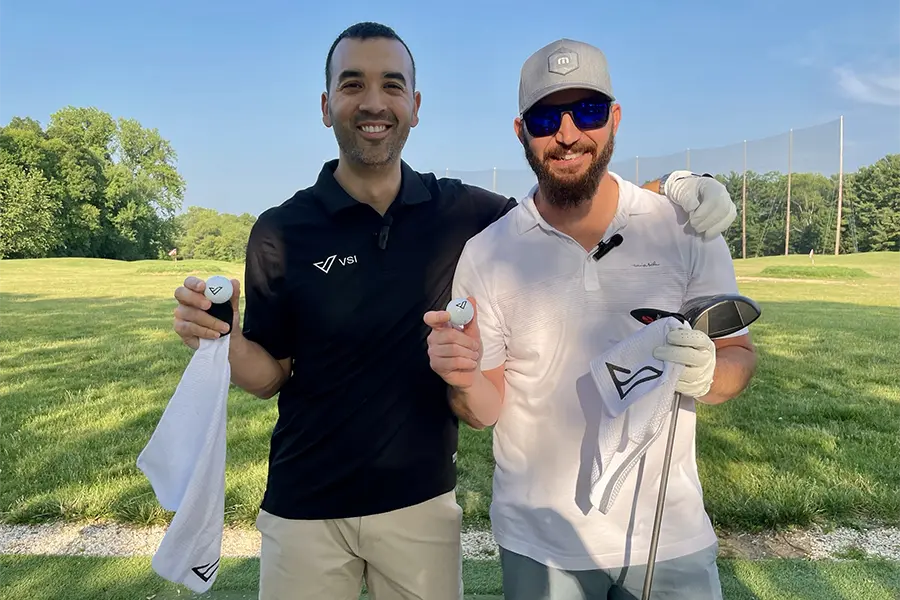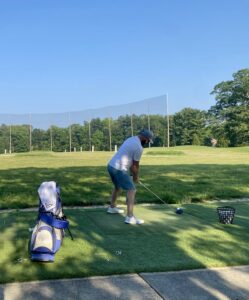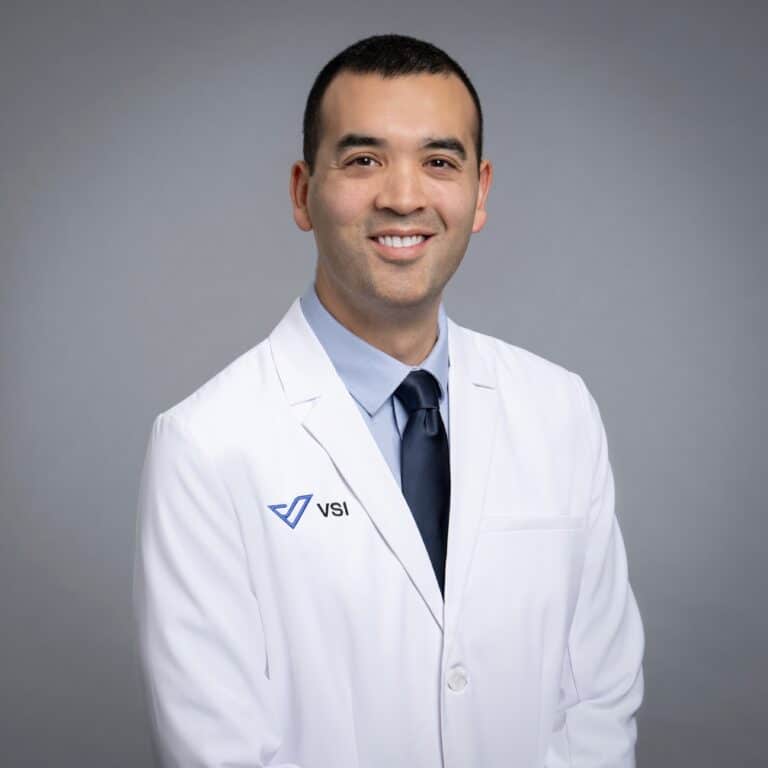
Back in the Swing: Golf Pain-Free This Summer
This is Men’s Health Week and for many men, golf is more than a hobby. It’s a passion, a challenge, and a vital part of staying active and connected. But when back or neck pain creeps in, it can turn every swing into a struggle and every round into a risk. For Cade, an avid golfer, years of discomfort eventually led to a turning point: disc replacement surgery with Dr. Colin Haines that not only relieved his pain but brought his swing and his life back in full motion.
“I’ve had the best two rounds of my life after surgery,” he said when the two of us recently met up at a golf course in Northern Virginia. “I shot two 79s and a 78. I’ve never broken 80 before.”
From Limited Movement to Full Rotation
Before surgery, Cade couldn’t even lift his arm past shoulder height. Numbness in his fingers, constant pain, and a sense of physical limitation made every movement feel like a chore. He waited, hoping it would improve, but it didn’t. “I already felt paralyzed. I was stuck in my movement. The pain controlled what I could do,” he told me.

Thankfully Cade came to Dr. Haines for help. Dr. Haines performed a 2-level cervical disc replacement (ACDR) in October 2023 and Cade noticed the difference almost immediately. The nerve pressure was gone. His pain had lifted. And perhaps most important for a golfer and busy father of two, he could rotate again. Where his swing once stopped short, he could now follow through completely, with more power and zero pain. In time, his confidence returned and so did the joy of playing golf, moving freely, and regaining a part of life that pain had taken away. He’s got a simple tip for anyone who can’t play because of pain.
“I should’ve done it sooner. I waited, thinking it would go away. But pain is your body talking and listening to it,” Cooper says. “I don’t recommend putting things off. Get it looked at. Get it fixed and move on.”
Learn More About Cade’s Comeback
Play Smart and Protect Your Back
Even if you’re not facing surgery, back and neck pain are common among golfers, especially in the summer when long rounds, travel, and heat can take a toll. Here are a few tips to help protect your spine while keeping your game strong, as seen on this podcast:
1. Swing Smart
Golf is a rotational sport, which means your back takes on a lot of torque. To reduce strain:
- Warm up properly before your round with light stretching and a few easy swings.
- Engage your core throughout the swing to support your spine.
- Avoid overswinging — you don’t need to muscle every drive. A controlled, balanced swing protects your back and often improves accuracy.
- Follow through evenly. A lopsided follow-through can indicate you’re overcompensating and putting pressure on one side of your back.
2. Use Safe Posture When Picking Up Your Ball
Bending over again and again, especially on the greens, adds up.
- Bend your knees to pick up the ball the safest way.
- Use a ball retriever or a club to scoop up the ball when possible.
- If you must bend, hinge at the hips with a slight bend in the knees, keeping your back straight.
- Avoid twisting while bent over, rotate your whole body instead.
3. Ditch the Bag and Use a Rolling Cart
Carrying a golf bag for 18 holes might feel like a badge of honor, but it can compress your spine, aggravate shoulder muscles, and fatigue your lower back.
- Opt for a rolling cart instead of a carry bag. Today’s push carts are lightweight, ergonomic, and even good for pace of play.
- If you do carry, use dual straps and switch shoulders regularly.
- And don’t forget: Hydrate. Dehydration can tighten muscles and increase the risk of strain.
4. Know When to Listen to Your Body
One of the biggest lessons from this golfer’s story? Don’t wait until it’s unbearable.
Whether it’s seeing a physical therapist, improving your golf mechanics, or consulting with a spine specialist, addressing pain early can prevent bigger problems later.
You Don’t Have to Choose Between Golf and Your Health
Golf is one of the few sports that people can play for a lifetime but only if they respect their bodies in the process. The story of this golfer’s recovery and return to form is a reminder that modern medicine, smart movement, and a bit of courage can restore mobility and joy.
This Men’s Health Week and all summer, take care of your body as seriously as your score. Because when your back feels good, your game follows.
They say sitting is the new smoking, which might explain the enormous growth and popularity of walking pads or walking desks. Are they the key to solving the problem of our sedentary lives or are there risks to consider? We’re walking and talking about it with VSI Spine Surgeon Ehsan Jazini in this episode.
Topics covered
About the Author
Featured Resources
Insights to Achieve a Pain-Free Life



